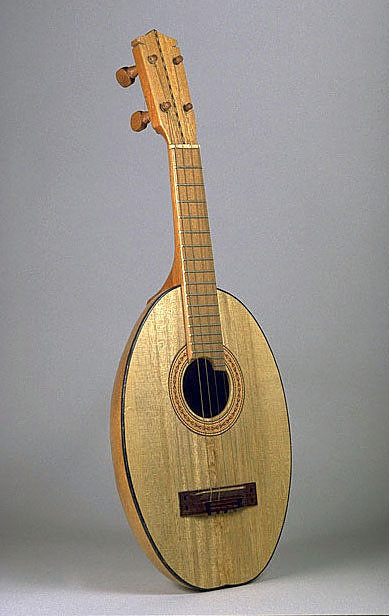
Fiesta Aquí, Fiesta Allá: Music of Puerto Rico
Lesson 10
Traigo Esta Trulla: Fiestas Navideñas in Puerto Rico and Beyond


Untitled Christmas Poster, by Rafael Tufino. National Museum of American History.
What is Trulla Navideña, why is it important, and where is it practiced?

Traigo Esta Trulla: Fiestas Navideñas in Puerto Rico and Beyond
HISTORY & CULTURE
MUSIC LISTENING
30+ MIN
30+ MIN
20+ MIN

MUSIC MAKING
Component 1

30+ minutes
Trulla Navideña!
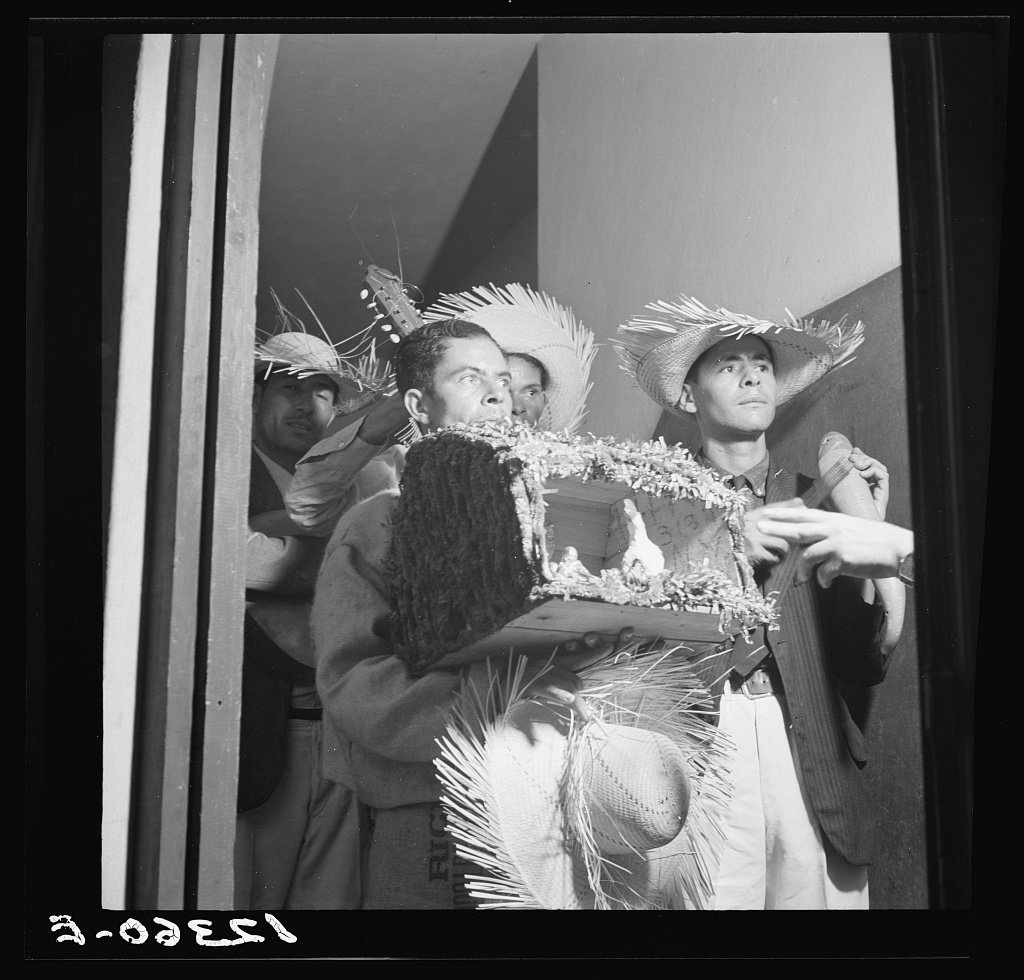
Three Kings Day, Wandering Musicians Carry a Primitive Creche From House to House and Sing for Pennies, In a Student's Boarding House, Rio Pedras, Puerto Rico, photo by Edwin Rosskam. Library of Congress.


The Longest Christmas in the World
Puerto Ricans love to boast about having the longest Christmas season in the world!

Programa de Navidad, by Antonio Maldonado. National Museum of American History.
- Shortly after Thanksgiving, preparations begin.
- Although Christmas Day is regarded as a culminating moment, with families gathering to eat typical dishes and give presents, Dec. 25th is only the half-way point of the Christmas Season!


A Six-Week Fiesta!
Several important parties follow Christmas Day:
- New Year’s Day
- Three Kings Day (January 6th)
- Fiesta de la Calle de San Sebastian
This six-week-long "Christmas" fiesta is a chance for throwing parties, making promesas (resolutions), exchanging gifts, and performing trulla.
What is trulla?
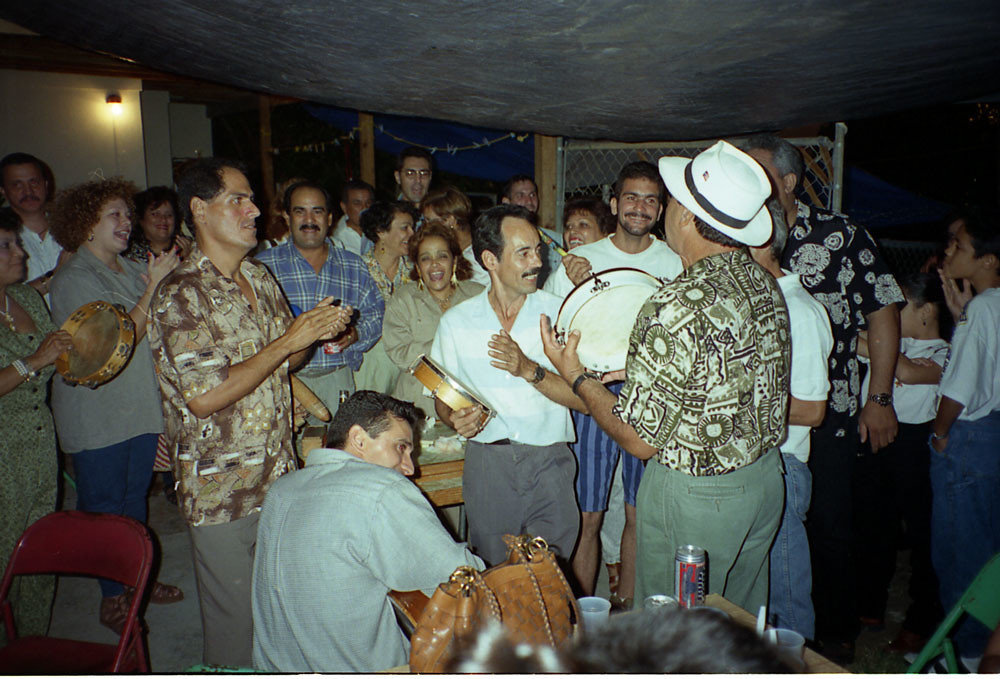
Puerto Rico, Tres Reyes, photo by Ard Hesselink. CC BY-NC-ND 2.0, via Flickr.


Trulla: A Cherished Tradition
The trulla is one of Puerto Rico’s most cherished Christmas traditions:
-
The term itself means "noise" ... and in this context, it describes the group of people making the noise:
- Often performed at nighttime throughout the Christmas season, trullas are surprise visits to unsuspecting households.
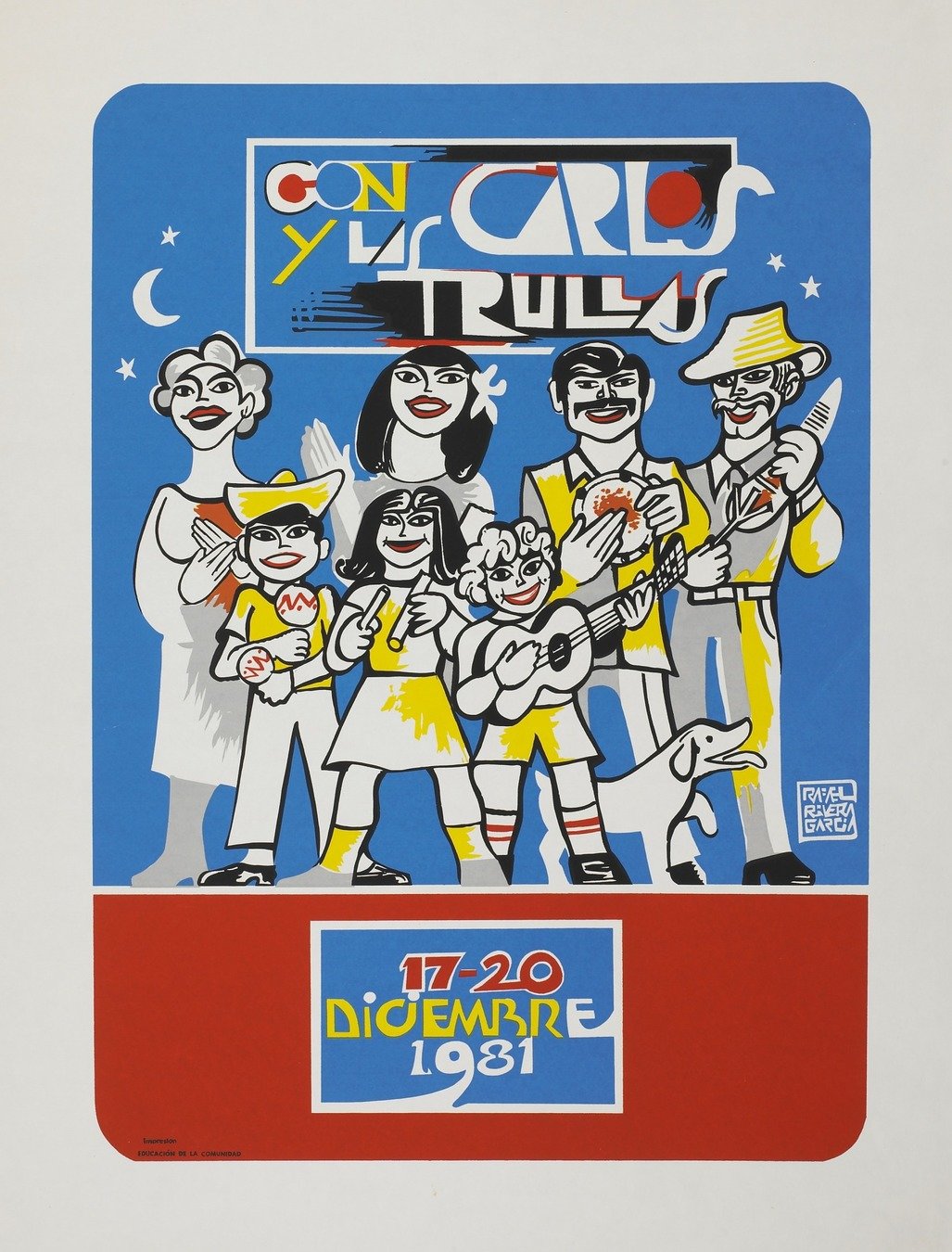
Con Carlos y las Trullas, by Rafael Rivera Garcia. National Museum of American History.

Trulla, Parranda, or Asalto Navideño?


Trullas are also sometimes referred to as parranda or asalto navideño.
Those inside the house wake up to the sound of music and merriment, and typically respond by sharing food and drinks and joining the trulla as it heads to the next home.
Importantly, parranda/trulla/asalto navideño can be understood as a complex practice that creates social bonds and collective identity through partying, singing, eating and drinking.

A Christmas Story ...

When my mom was growing up, no one was safe from a late-night asalto throughout these six weeks of celebration. Several times during the never-ending holiday, family and friends—usually a cross-generational group—would grab a guitar, pile into cars, drive to a sleeping friend’s house, bang on the door, and start singing songs about roast pork and waking people up to dance. (This is not an exaggeration. One song titled "Pobre Lechón" is a jaunty song expressing remorse for a poor pig that was roasted) . . .
In her 2015 article "Ábranme la Puerta" (Open the Door), Cecilia Peterson describes a Puerto Rican asalto scene:
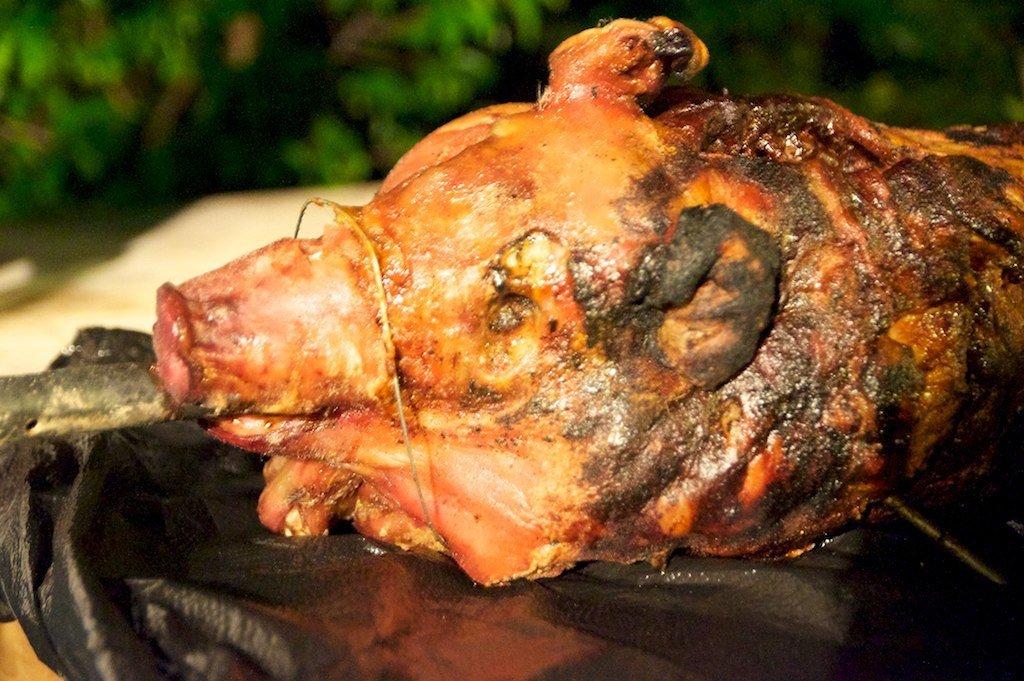
Lechón Asado, photo by Dr. Ronaldo Emmanuelli-Jiménez, CC BY-NC-ND 2.0, via Flickr.

Trulla/Parranda in the Bronx!

Watch a Christmas assault through the streets of the Bronx (NYC).
Puerto Rican Parranda Through the Streets of the Bronx, uploaded by Welcome2TheBronx.
What instruments do you notice?

Trulla Percussion

The most common instruments used in a trulla are percussion: Güiro, cowbell, maracas, and panderos (i.e., pleneras): They are easy to carry!
- The güiro is a Pre-Columbian musical instrument of Taíno origin
- Cowbells are often used in salsa music.
- Maracas are also commonly used in salsa music and are made of leather, wood, or plastic.
- Panderos (i.e., pleneras) are a type of hand-held drum (in essence jingle-less tambourines)
- Sometimes, the barril de bomba, a drum used in bomba music, is also included.
Güiro
Maracas
LP Cowbell
Bomba Drum
Pandero
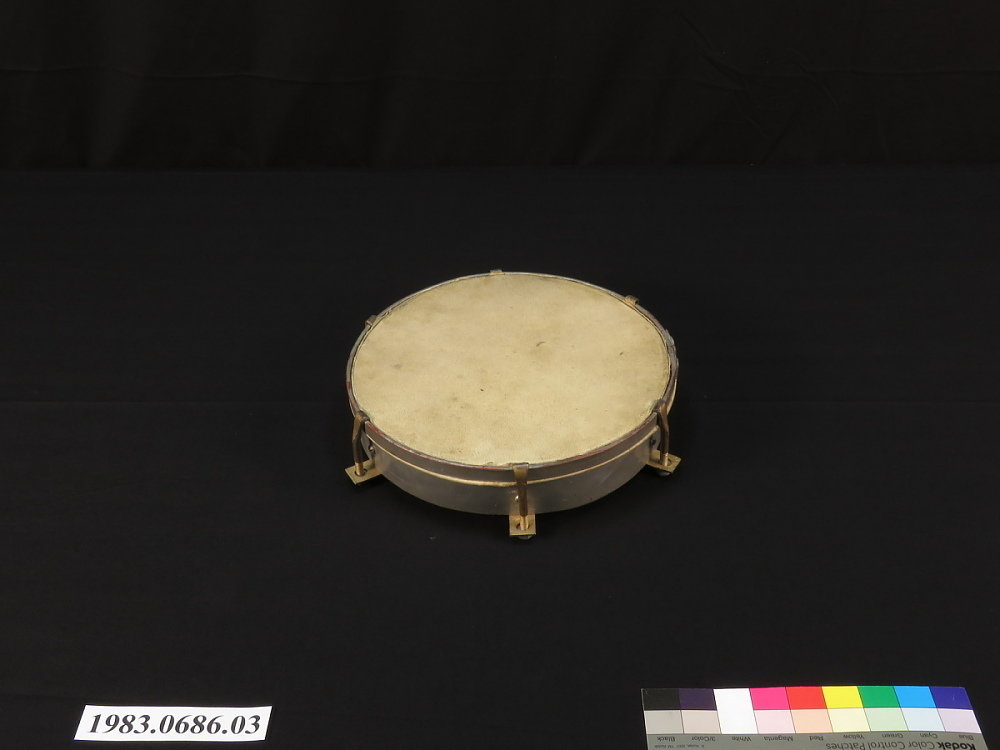


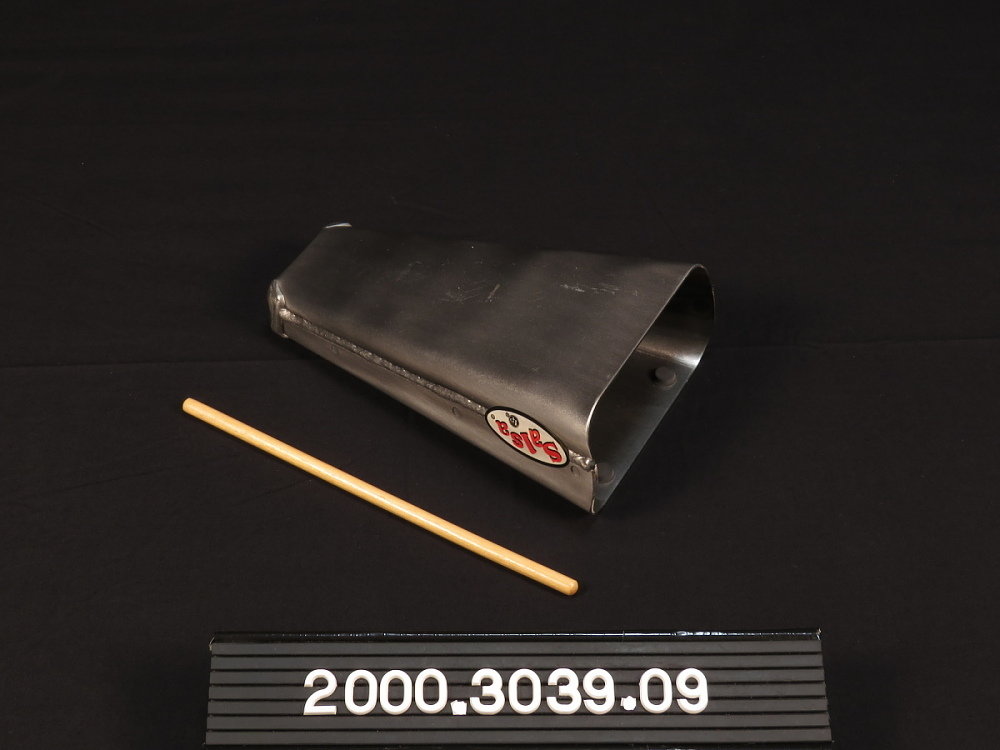
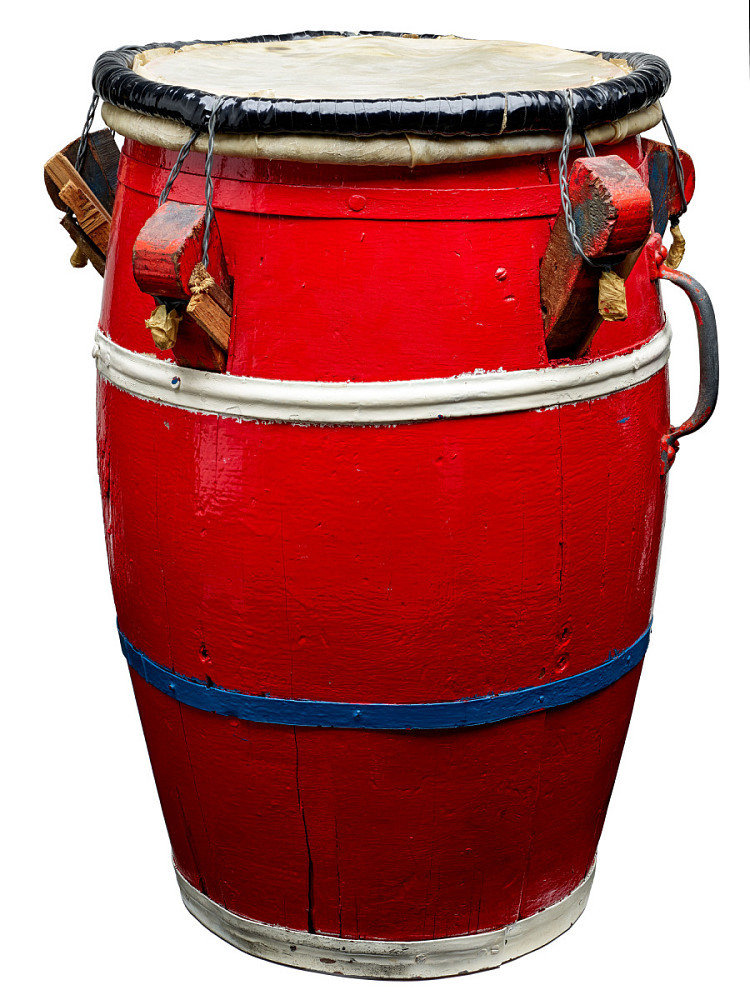
All items by unknown makers, except Pandero, by Jesus Cepeda. National Museum of American History.

The Jíbaro Orchestra

The bordonúa, cuatro, and tiple are guitar-like instruments and are together known as the Puerto Rican orquesta jíbara (jíbaro orchestra).
All images from the National Museum of American History.
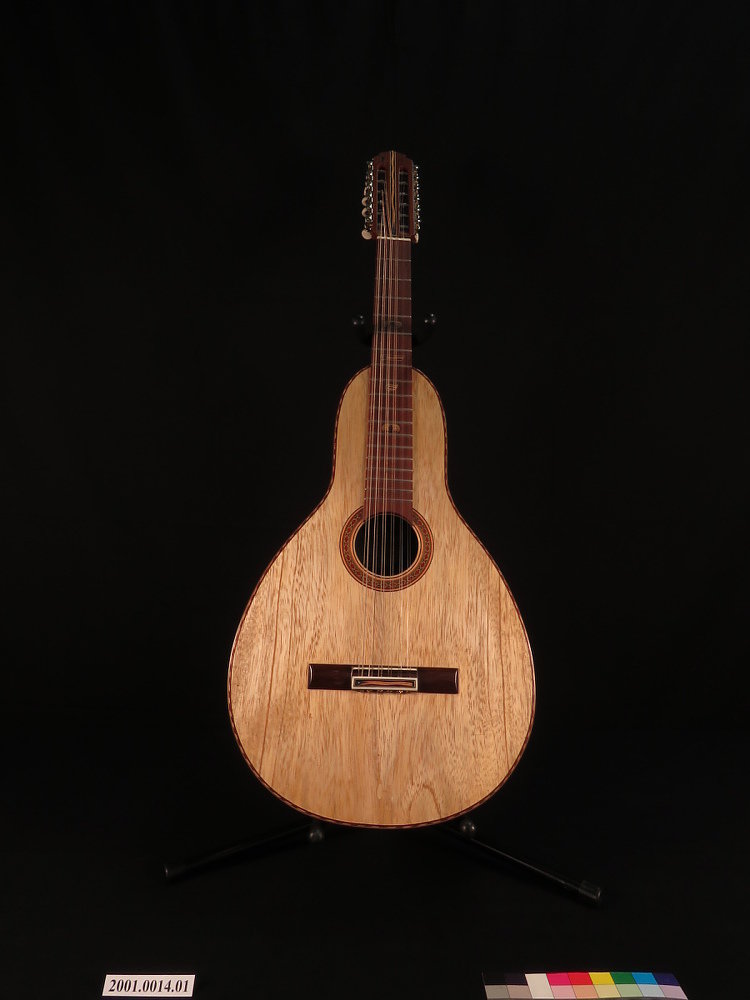
Tiple, unknown maker.
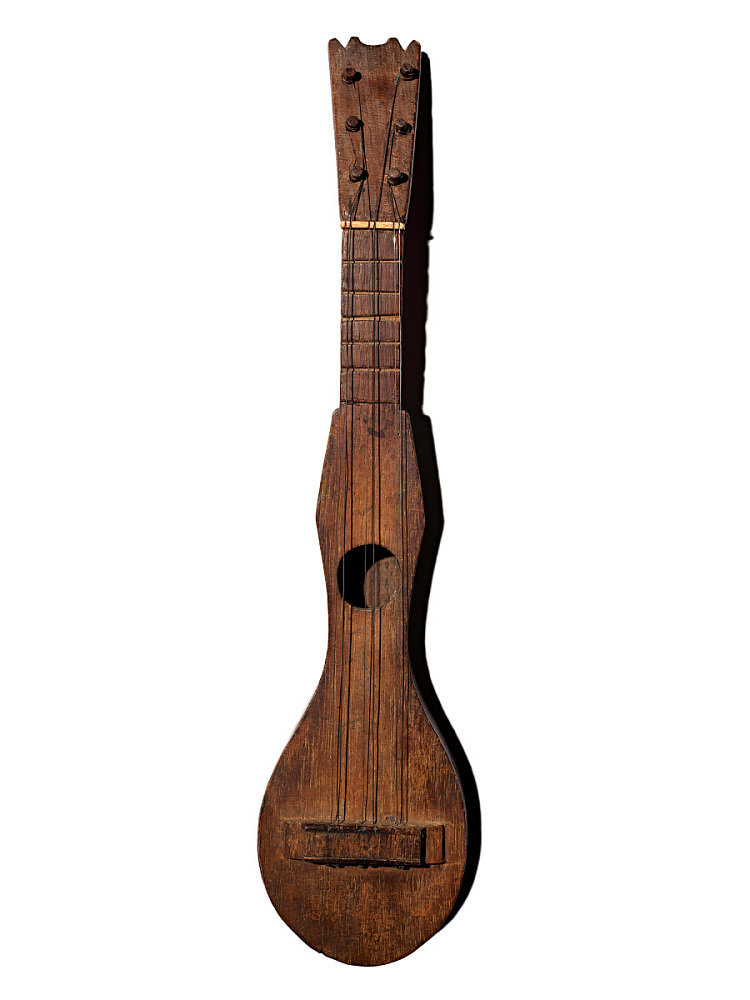
Tiple, unknown maker.
Click on the cuatro image to see a video example!
Bordonúa, by Rafael Avilés Vázquez.
Sometimes, trulla groups include chordophones such as the bordonúa, tiple, guitar, and cuatro (Puerto Rico's national instrument).

Aguinaldos and Villancicos

Aguinaldos and villancicos are the songs that trulla groups perform.
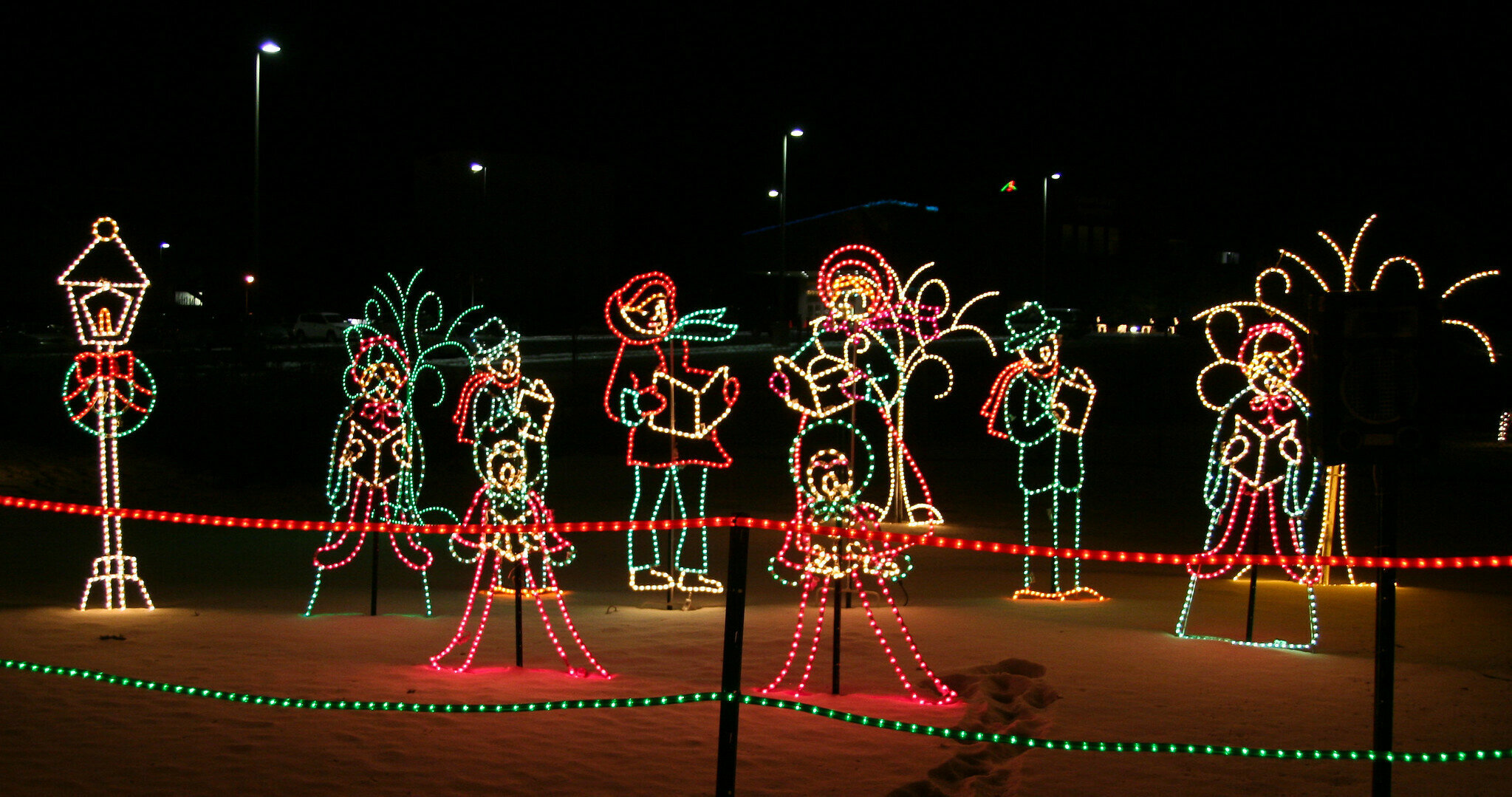
These song forms are often compared to Christmas carols—although they are not exclusive to the Christmas season.

Carolers, by Sharon Mollerus, CC BY 2.0, via Flickr.
A trulla / parranda is essentially an aguinaldo / villancico choir—with or without instrumentalists.
Trulla and Musical Heritage

Trullas are commonly associated with rural life traditions, specifically música jíbara.
- Aguinaldos follow a verse – refrain formula, where a lead singer is answered by the choir’s refrain (call and response).
- Common instrumentation includes voice (most importantly), guitar, and güiro.

Programa de Navidad 1977, by Jose M. Contreras. National Museum of American History.

What does the use of call and response form and instruments like güiro and guitar, tell us about the musical heritage of this tradition?
Wake Up, It's a Parranda!

"Si escuchas un ruido, guitarra y tambora, es una parranda levántate ahora"
(If you hear noise, guitars, and drums, it’s a parranda; get up now)
Watch another example, this time from Puerto Rico. Listen for the "call" and especially, the "response":
Parranda, Trulla y Asalto de Navidad en Mayagüez, Puerto Rico, uploaded by Canal de YouTube Conociendo a Puerto Rico.


Sing and clap along to the refrain:
Wake Up, It's a Parranda!

"Si escuchas un ruido, guitarra y tambora, es una parranda levántate ahora"
(If you hear noise, guitars, and drums, it’s a parranda; get up now)
Watch "Parranda, Trulla y Asalto de Navidad en Mayagüez" once more!
How to Trulla

Trulla songs can be performed in a variety of ways. Remember:
- The voice is the central instrument of trulla performance
- It may be performed a cappella (i.e., without instrumental accompaniment)
- It may be accompanied by any combination of chordophones (e.g., guitar and/or cuatro), membranophones (e.g., drums), idiophones (e.g., güiro), and/or aerophones (e.g., trumpet)
- Hand clapping or even beating on pots is common.
The main ingredient of trulla is joy and a good disposition to wander endlessly from house to house.

Let's Trulla: Attentive and Engaged Listening

- What instruments do you hear?
- Tap the steady beat on the "call". Walk the steady beat on the "response".
- Listen for the rhythm played on the drums. When you hear it, try to pat along.
- Hum along with the response.
- When you're ready, try to sing along with the response.

Listen to "Trulla de Navidad".
(Someone hasn't come with this Christmas crowd. Perhaps next year, he'll get nothing at all.)
Alguien no ha venido con esta multitud navideña.
no obtendrá nada en el nuevo año.
Refrain:
Let's Trulla: Enactive Listening and Creating

Lyrics/Translation (Refrain):

Alguien no ha venido con esta multitud navideña.
no obtendrá nada en el nuevo año.
(Someone hasn't come with this Christmas crowd. Perhaps next year, he'll get nothing at all.)
How will you participate?
Sing the response? Be the leader (learn the calls)? Clap the steady beat (or play it on an instrument)? Make up your own rhythm pattern? Play the chords?
"Trulla de Navidad" Lyrics

Refrain:

Alguien no ha venido con esta multitud navideña.
no obtendrá nada en el nuevo año.
(Someone hasn't come with this Christmas crowd. Perhaps next year, he'll get nothing at all.)
Verse 1:
Verse 2:
Verse 3:
(Joyfully we come, My beloved friends, Singing to wish you A Happy New Year.)
(Oh noble sirs, hasten To hold up the lamp, And you will see That the New Year comes.)
(Go to the kitchen now And light up the fire. Prepare a fine hen, For this occasion.)
Let's Trulla: Put it all Together!

- After creating and practicing your class arrangement of "Trulla de Navidad", visit other classrooms in your school and perform it for them.
- Encourage them to clap and sing along.
- Who knows, maybe they'll join your trulla!

Take your show on the road!

Trulla: A Changing Christmas Tradition

Like many other musical and cultural traditions, trulla has changed over time, and impromptu performances are not as common as they once were.
- However, there are still professional trulla performances that contribute to exposing new audiences to this quintessential Puerto Rican Christmas tradition.
Holiday Parade by Gibaro de Puerto Rico - About to Begin, video by Smithsonian Latino Center Mobile Outreach.


Learning Checkpoint
- How long is Christmas in Puerto Rico?
- What is trulla?
- What are some defining musical characteristics of aguinaldos (the songs trulla groups perform)?

End of Component 1: Where will you go next?


Puerto Rican Music and Christmas in Diaspora: Hawai'i
Component 2

30+ minutes
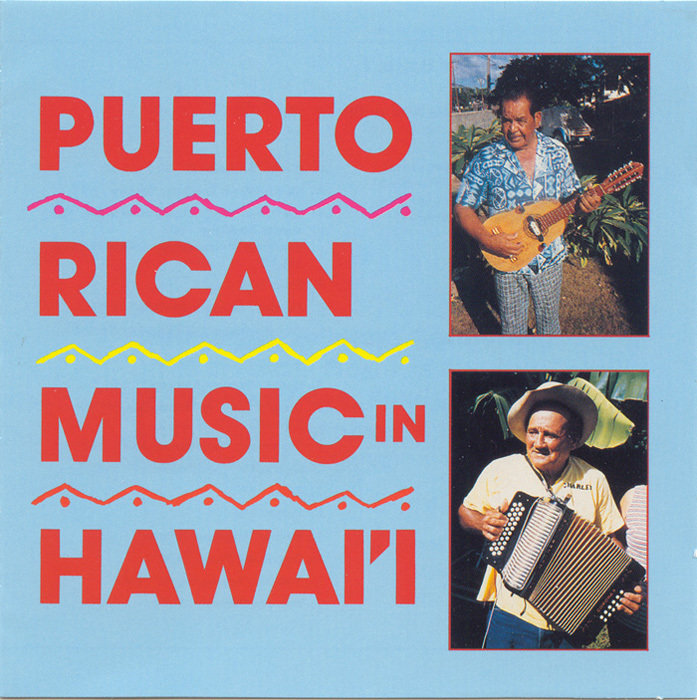
Puerto Rican Music in Hawai'i, cover art by Daphne Shuttleworth. Smithsonian Folkways Recordings.

Puerto Ricans in Hawai'i

In 1900, approximately five thousand Puerto Ricans (men, women, and children) came to Hawai'i contracted as plantation laborers.
Watch this short video to learn more.
Puertorriqueños en Hawaii, uploaded by NuestroCuatro.


What is Meant by "Diaspora?"
The term “diaspora” refers to social groups that have scattered voluntarily or forcibly away from their original geographic locale.
Although historically the term referred to the forced mass dispersion of Jews around the globe, “diaspora” is now used broadly to represent any national, ethnic, or cultural group people who strongly identify with a homeland (e.g., Puerto Rico), but live outside of it (e.g., Hawai'i).

Puerto Ricans in Hawai'i

When they arrived, Puerto Ricans settled on Oahu, Kaua’i, Maui, and Hawai'i (i.e. The Big Island).
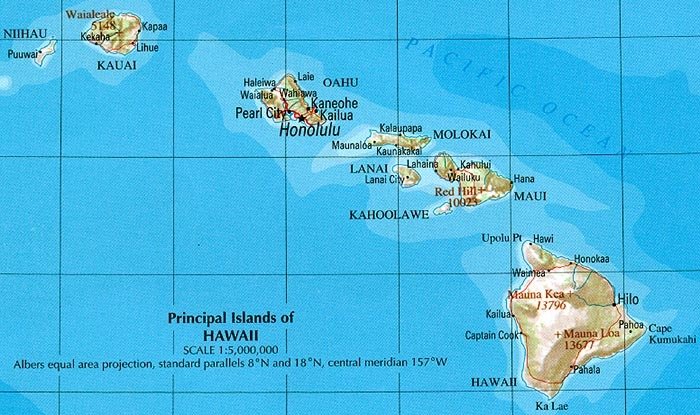
Hawaii (Reference Map), Portion of "The National Atlas of the United States of America. General Reference," by the U.S. Geological Survey. University of Texas Libraries.

Plantation Life in Hawai'i

In the early 1900s, Puerto Ricans lived on plantations in isolation, in camps exclusively comprised of Puerto Ricans.
In what ways do you think plantation life in Hawai'i shaped Puerto Rican musical culture?

Diaspora and Musical "Authenticity"


New identities are formed in diaspora, reinterpreting and fusing cultural elements from home (e.g., Puerto Rico) and the host nation (e.g., Hawai'i).
Sometimes, they aim to represent musical expressions as they were originally created and performed, rather than desiring change and embracing innovation.
Diasporic communities are sometimes preoccupied with perceptions of “authenticity” and go to great lengths to preserve, maintain, and transmit musical traditions and customs.


It is important to remember that until the mid 1900s, there was little direct contact between Puerto Ricans in Hawai’i and those that remained in the homeland.
This reality resulted in the preservation and modification of older musical styles and forms that are not very common in Puerto Rico today.
The "style" of Puerto Rican music in Hawai'i can be traced to rural, jibaro communities.
The Jibaro Connection

Man in a Sugar Cane Field During Harvest, Puerto Rico 1942, photo by Jack Delano. Library of Congress.

Puerto Rican Dance Music in Hawai'i

Life on plantations was tough, and one of the few diversions was a weekly Saturday night communal dance.
At these events, people would play their interpretations of early Puerto Rican musical styles, such as vals (waltz), guaracha (a salsa-like style), plena, bomba, polka, mazurka, and sometimes danza (in a greatly altered form).
"La Gallina," by Charles Figueroa and August, Virginia, and Wayne Rodrigues
What type of music is this?
How do you know?
What is interesting about the instrumentation?

The Conjunto

- It originally included guitar, cuatro, and güiro.
- As you just heard, the button accordion sometimes replaces the cuatro as the third instrument in the ensemble.
- This instrumentation continues to be used in Hawai’i today—with a few modifications.

Top right: George Ayala (Cuatro). Bottom right: Charlie Figueroa (Accordion), photos by Ted Solís. Smithsonian Folkways Recordings. Above: Puerto Rican Güiro, unknown maker. National Museum of American History.

Puerto Rican musicians in Hawai'i formed conjuntos (i.e., ensembles) to play their music.
"Vals," by George Ayala, Bonaventura Torres, and Leroy Joseph Pinero

Kachi-Kachi Music

The quick-tempo dance music played by Hawaiian Puerto Ricans became known as kachi-kachi music.
In Japanese, the word kachi means scratch. According to some accounts, Japanese plantation workers who worked alongside Puerto Ricans in Hawai'i thought this music (the güiro in particular) sounded "scratchy". They began calling it kachi-kachi music—and the name stuck.

Japanese Workers Loading Sugar Cane on Carts, Hawaii in 1917, unknown photographer. Library of Congress.

Puerto Rican Dance Music in Hawai'i Evolves

After WWII (1939–1945), Puerto Rican servicemen introduced two members of the membranophone family to the ensemble, bongos and conga drums.
In the mid-1970s, the electric bass guitar was added to the ensemble and has since become a standard member of the “trio.”
What type of music is this?
How do you know?
"Ay Mamá, Que Voy a Hacer," performed by Mi Gente
What instruments do you hear?
"Seis," by Julio Rodriguez, Tommy Valentine, Johnny Lopez, Glenn Ferreira, Sam Mercado, and Eddy Hosino

Puerto Rican Christmas Music in Hawai'i: Trulla!

The Christmas season has always been very important to Puerto Rican diasporic communities, and the trulla (i.e., parranda; asalto navideño), is one of the most pervasive of all Puerto Rican Christmas traditions.
"Asalto Navideño," performed by Los Caminantes
What is this song about? Where do you think this is being performed?

In Hawai'i, Christmas music is a very important part of the repertoire kachi-kachi conjuntos play.

Carolers, by Sharon Mollerus, CC BY 2.0, via Flickr.

Trulla: A Cherished Tradition
The trulla is one of Puerto Rico’s most cherished Christmas traditions:
-
The term itself means "noise" ... and in this context, it describes the group of people making the noise:
- Often performed at nighttime throughout the Christmas season, trullas are surprise visits to unsuspecting households.

Con Carlos y las Trullas, by Rafael Rivera Garcia. National Museum of American History.

Puerto Rican Christmas in Hawai'i: Trulla!

Listen again:
"Asalto Navideño," performed by Los Caminantes


What type of music do you think this is?
How do you know?
What instruments do you hear?
Los Tres Magos, by The Caban Group. National Museum of American History.
Puerto Rican Christmas in Hawai'i: Fiesta de Reyes

Celebrated yearly on January 6th (part of Christmas Season), Epiphany is arguably the most important fiesta for the local Puerto Rican community in Hawai'i.
- Puerto Ricans more commonly refer to Epiphany as Fiesta de Reyes (Three Kings Celebration).

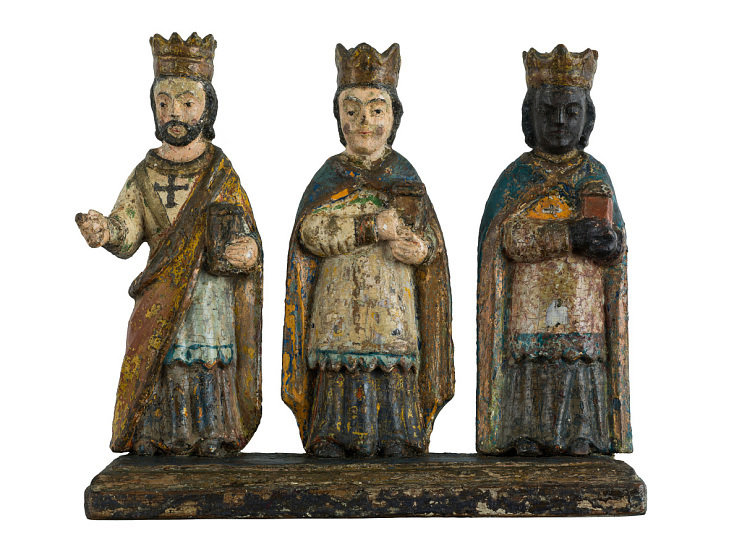
Left: Los Tres Reyes Magos, by the Rivera Group. National Museum of American History.
This fiesta is held in adoration of the Three Magi (Three Wise Men) who, according to Christian lore, presented the new-born Jesus with offerings of myrrh, gold, and frankincense.
A Puerto Rican Epiphany Service in Hawai'i

For Día de Reyes on January 6th, Puerto Rican festivals typically involve Catholic mass and outdoor celebrations, food, and music.
-
Listen to "Perdon Señor" (Pardon us, Oh Lord).
- The phrase is: El Señor es mi Fuerza, mi Roca y Salvación (The Lord is my Strength, my Rock and my Salvation).
"Excerpt from Epiphany Service," performed by Father Roberto de Oter0o, Seminarian Refugio Sanchex, and Patrons of Saint Theresa's Catholic Church in Kalihi, HI


Adoracíon de los Reyes Magos, by El Greco, CC BY-SA 4.0, via Museo Soumaya and Wikimedia Commons.

In addition to the Christmas season and other religious occasions, there are many secular opportunities for the performance of kachi-kachi music in Hawai'i throughout the year.
This seis jam was recorded at a baseball game in Hawai'i in the 1980s.
Kachi-Kachi Music in Secular Contexts

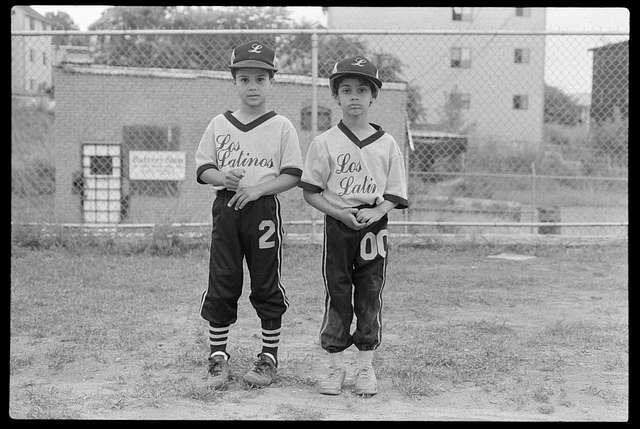
One example is the Puerto Rican softball league, which is held on Sundays from January through April.
Informal kachi-kachi jam sessions take place during, between, and after the games.
Puerto Rican Festival Baseball Game, by Tom Rankin. Library of Congress.
The Future of Puerto Rican Dance Music in Hawai'i

There is a modest legacy of communal dance that remains a part of social life in Hawaiian Puerto Rican communities today, especially in Honolulu.
-
This is in part possible through the support of the United Puerto Rican Association of Hawai'i, an association dedicated to the preservation and transmission of history, culture, and arts of Puerto Ricans in Hawai'i.
- They host several dances a year, including Mother's Day, scholarship fundraisers, and Three Kings celebrations.

However, this tradition is in danger of being lost, since younger generations (with a few exceptions) show little interest in traditional Puerto Rican musical forms.

Puerto Rican Hawaiians in Pop Culture



Here are two Hawaiian musicians with Puerto Rican heritage that you might recognize!
Bruno Mars (born Peter Gene Hernandez) began his career performing in his family's band in Honolulu. Today, he is one of the best-selling music artists of all time.
Auliʻi Cravalho starred in Disney's Moana in 2016. She talks about growing up on the Big Island surrounded by kachi-kachi music!

Optional Activity: Create and Perform
Create a kachi-kachi and/or trulla-inspired "pep" song to cheer for your school team(s)! Consider these ideas:

- Compose a refrain in English - but use at least one Spanish word of your choice.
-
The refrain should be three lines in total:
- Make the first two lines the same (antecedent)
- Make the third line different (consequent).
- Make sure all three lines rhyme.
- Create a simple melody.
- Accompany your song with instruments or classroom items.
- Add a simple chord progression (e.g, I–IV–V).
- Perform it (for each other or for a game).
We are the mighty Tigers, levántate and cheer!
We are the mighty Tigers, levántate and cheer!
We are proud, so let's get loud. The Tigers are here!
An example:

Learning Checkpoint
- How did plantation life in Hawai'i affect the musical culture of the Puerto Ricans who lived there?
- What are some characteristics of Puerto Rican dance music in Hawai'i (kachi-kachi)?
- In what contexts is kachi-kachi music performed in Hawai'i?

End of Component 2: Where will you go next?


Parranda and Parang in the Circum-Caribbean
Component 3

20+ minutes
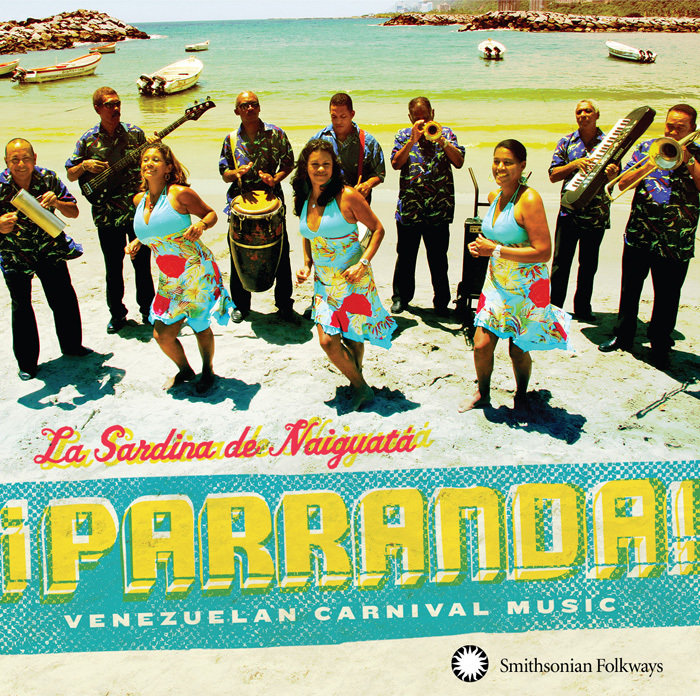
¡Parranda! Venezuelan Carnival Music, cover art by Galen Lawson. Smithsonian Folkways Recordings.

Trulla in the Circum-Caribbean

The Puerto Rican trulla tradition has had great impact in numerous cultures of the circum-Caribbean.
- The term "circum" means about or around.
- Thus, the "circum–Caribbean" refers to a region that includes the insular Caribbean, together with the northern coastal states of South America, Central America, and the Caribbean coast of Mexico and the US.
Caribbean (Political), map by U.S. Central Intelligence Agency. University of Texas Libraries.
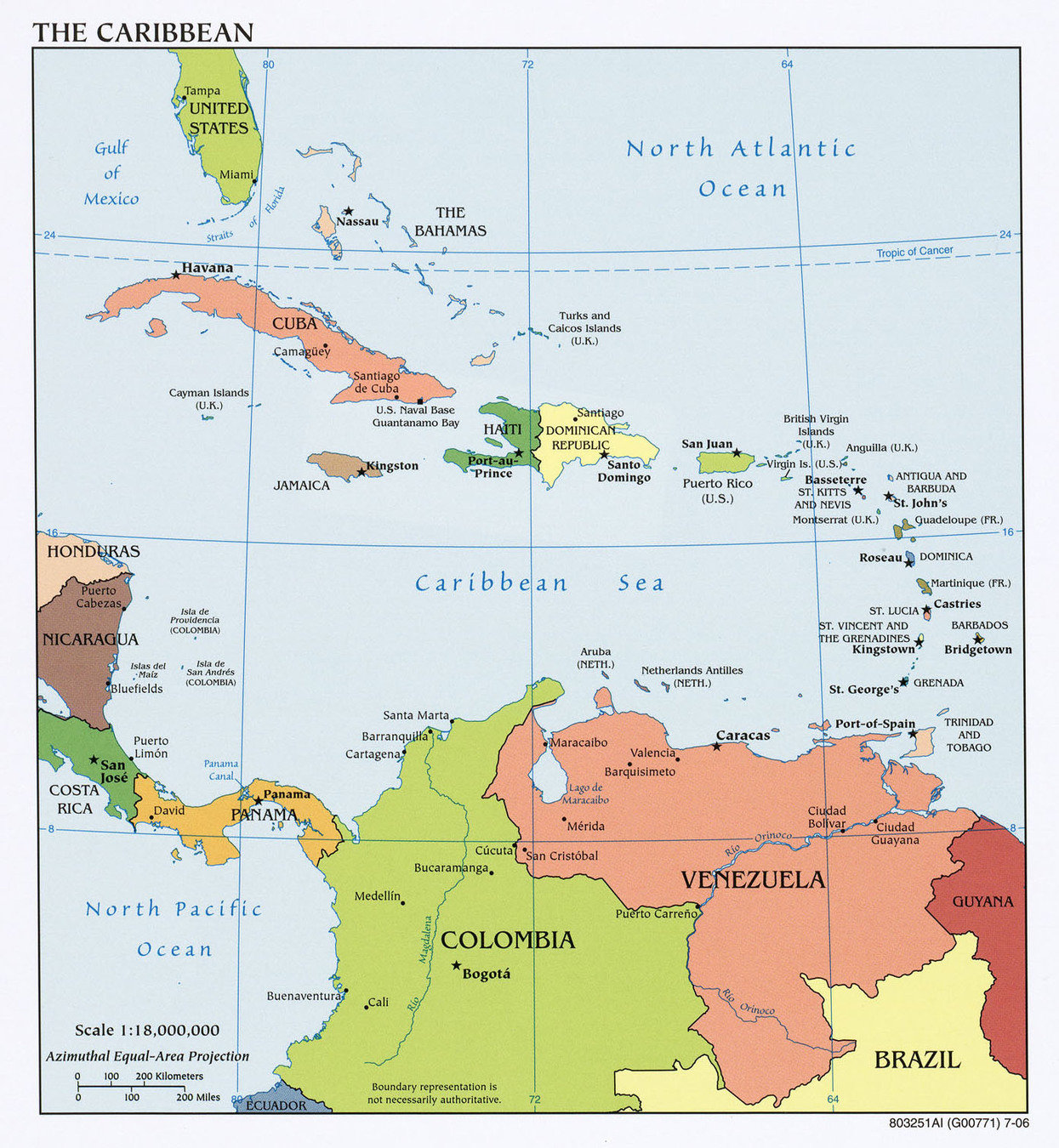


Trulla: A Cherished Christmas Tradition
The trulla is one of Puerto Rico’s most cherished Christmas traditions:
-
The term itself means "noise" ... and in this context, it describes the group of people making the noise:
- Often performed at nighttime throughout the Christmas season, trullas are surprise musical visits to unsuspecting households.

Con Carlos y las Trullas, by Rafael Rivera Garcia. National Museum of American History.

Trulla in the Circum-Carribbean


Outside of Puerto Rico, trulla is often known by its other name: Parranda.
Venezuela is one example of a location that has a rich parranda tradition.
Parang is the Trinidadian version of trulla practice, which emerged as an influence of Venezuela parranda.
Attentive Listening

Listen to the embedded audio recording as you think about these questions:
How would you describe the sounds?
What images come to mind?
What is the purpose and use of this music?

"Potpurrí Sabor a Navidad"

The song you just listened to is called "Potpurrí Sabor a Navidad" (A Taste of Christmas)—this medley featured four songs that have become classics of Venezuela’s Christmas celebrations.

Christmas, Christmas Celebration, by Marius Iordache. CC0, via Pixnio.


Christmas in Venezuela
Christmas festivities in Venezuela often feature the performance of festive songs that celebrate the birth of Jesus.
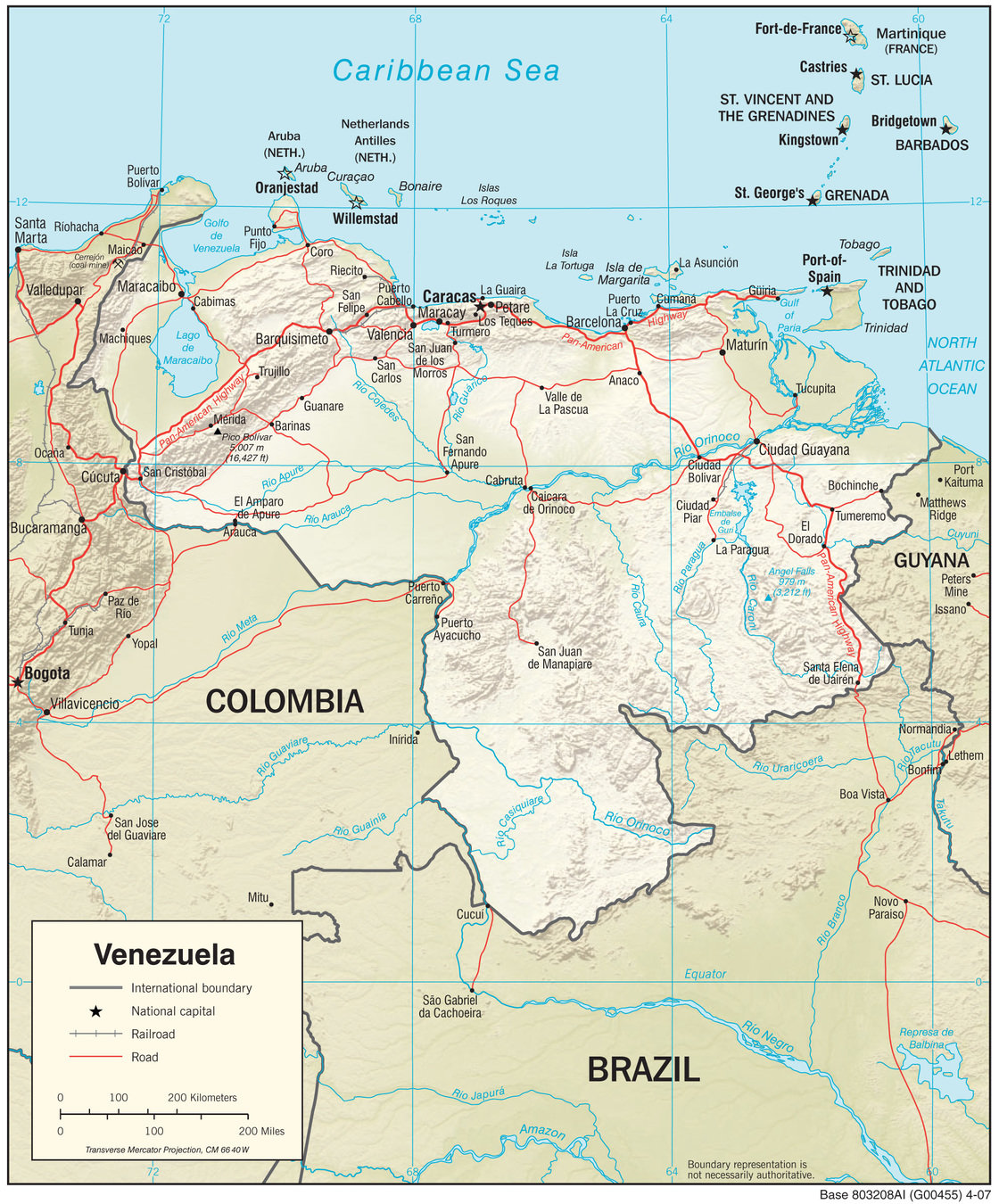
South America (Political) and Venezuela (Physiography), by U.S. Central Intelligence Agency. University of Texas Libraries. On both maps, Venezuela is circled in red.



The word parranda is used to describe the music and popular revelry of Carnival festivities and also Christmas festivities and songs.
Venezuelan Parranda
Did you know? In Venezuela, Carnival is celebrated during the Christmas season.
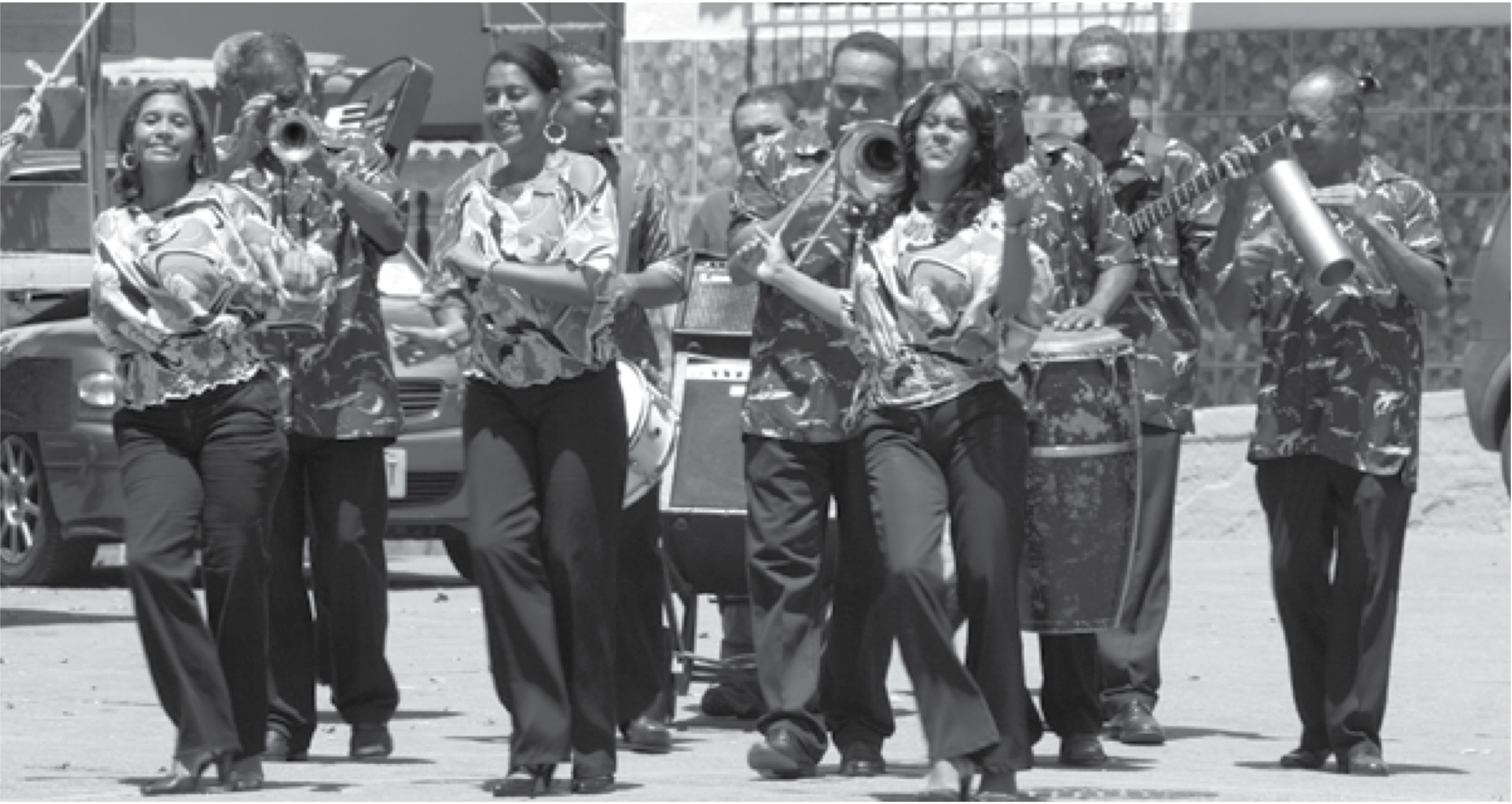
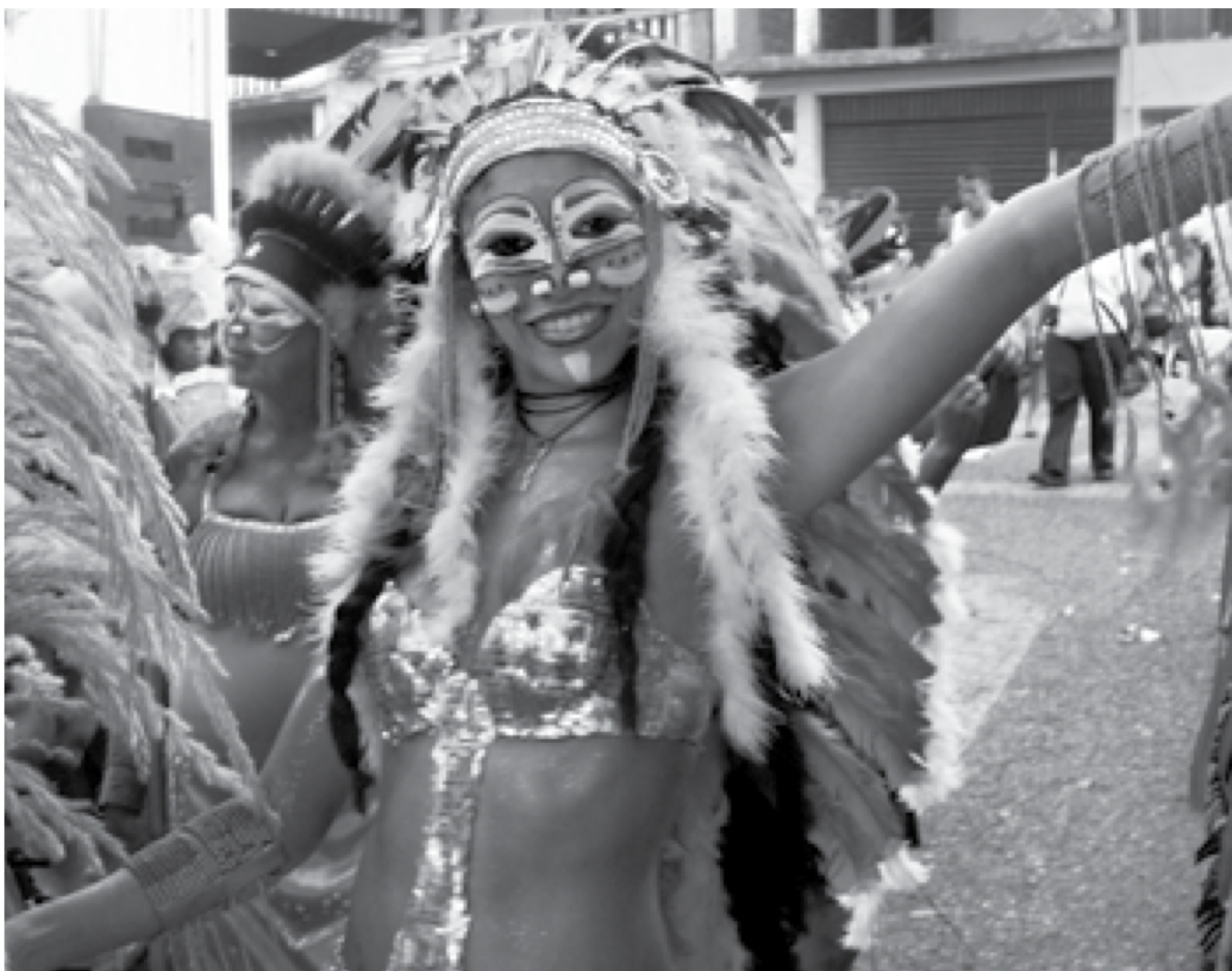
Left and Right: Venezuelan Carnival Scenes, unknown photographer. Smithsonian Folkways Recordings.


Like Carnival, the history of Venezuelan parranda is tied to the slave trade.
- Enslaved African people and their descendants created new cultural forms of expression in response to exploitation and repression.
Carnival: A Syncretic Process
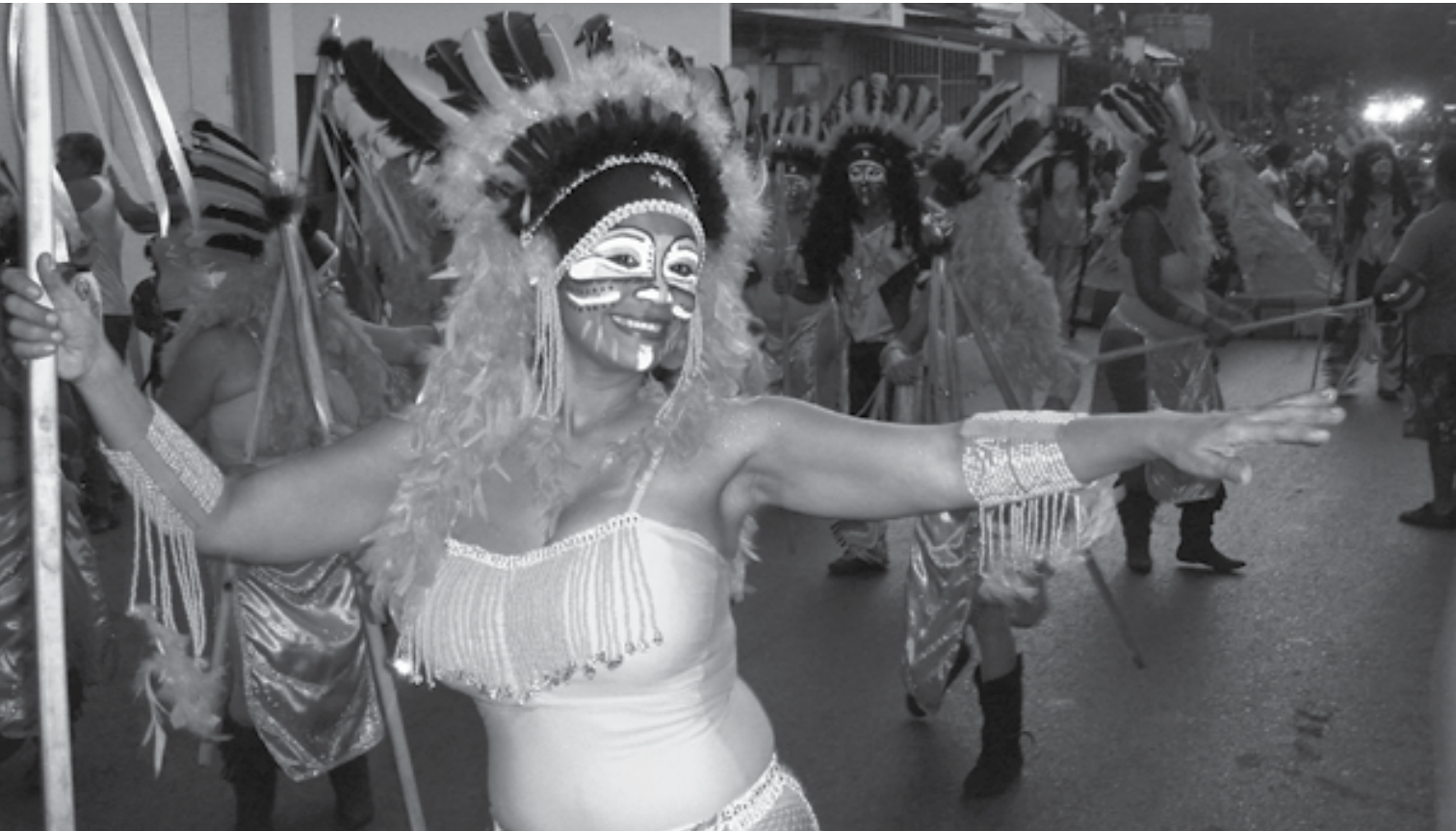
- They fused African musical traditions and elements with European ones, a process known as syncretism.
- Carnival is an example of the syncretic process; it combines elements of African culture with Catholic festivities.
A Venezuelan Carnival Scene, Charlie Weber. Smithsonian Folkways Recordings.


Naiguatá, Venezuela
Our exploration of Venezuela parranda focuses on the city of Naiguatá, which is home to one of the country's most celebrated Carnival traditions.
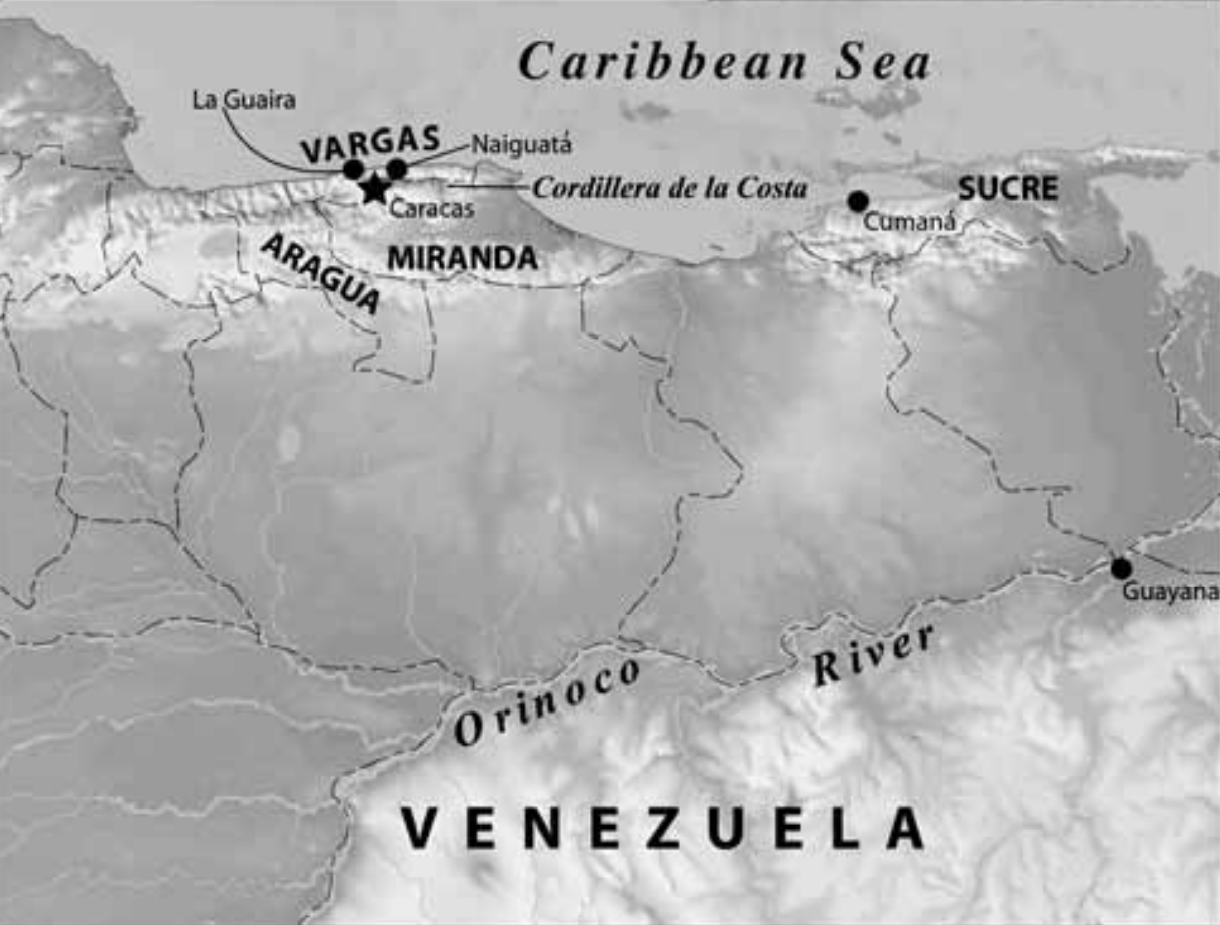
Map of Naiguatá, by Dan Cole. Smithsonian Folkways Recordings.
- Naiguatá is located in the state of Vargas, north of Caracas, the Venezuelan capital.
- The capital of Vargas is La Güaira, which is why its residents, including the people of Naiguatá, are called güaireños.


Parranda in Naiguatá
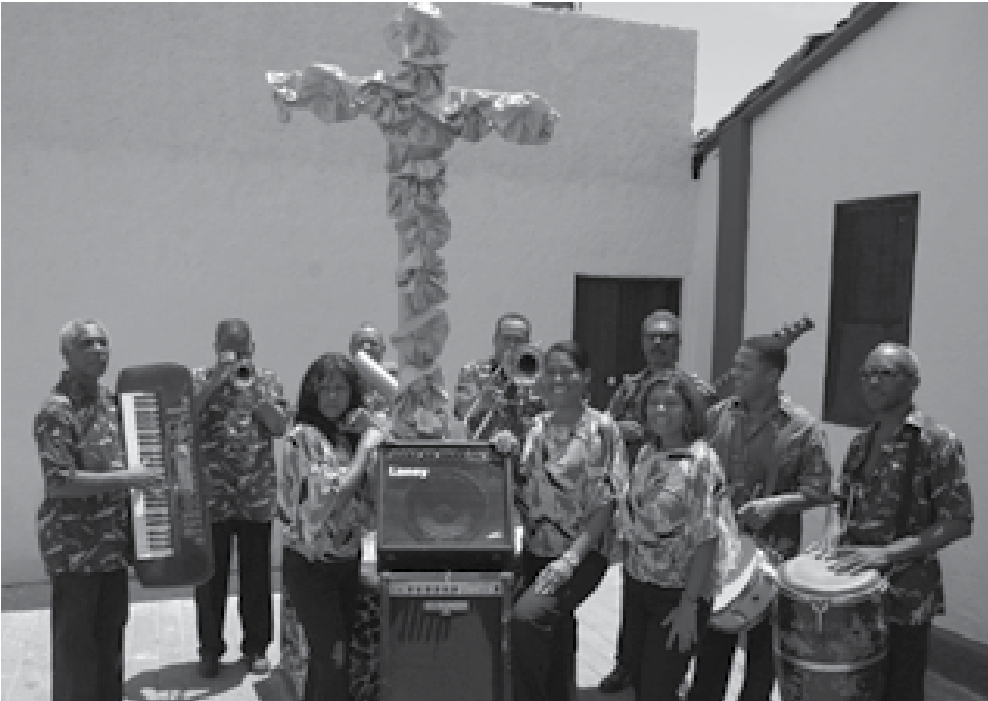
Güaireños are well known for having a fine sense of humor and a great fondness for parties and traditional music.
Parranda Musicians During a Religious Celebration in Naiguatá, unknown photographer. Smithsonian Folkways Recordings.

Over time, they have fused and created distinct instruments, songs, dances, and attires that represent a unique Venezuelan-Caribbean identity.
"Parranda Callejera (Street Parranda)," performed by La Sardina de Naiguatá

Entierro de la Sardina
One of the most popular celebrations in Nariguatá is Entierro de la Sardina (Burial of the Sardine): Carnival's closing ceremony.
- It is a procession and a form of street theater held on Ash Wednesday.
- This tradition arrived from Spain to Venezuela, where it acquired musical and cultural elements of its new home and transformed into its present character.
Watch this video to learn more.
La Sardina de Naiguatá on the Burial of the Sardine [Interview Video], uploaded by Smithsonian Folkways Recordings.


La Sardina de Niaguatá
The Entierro de la Sardina ceremony inspired the creation of La Sardina de Naiguatá, a local music group founded by in 1970 by Ricardo B. Díaz.
Watch this video and answer the following questions:
- What is Ricardo’s nickname?
- What instruments does the band use?
- What does the phrase “no one is a prophet in their own land mean”?
- What musical innovation makes the group a "prophet"?
Ricardo Benito Diaz of La Sardina de Naiguatá [Interview Video], uploaded by Smithsonian Folkways Recordings.


More Listening: "Pajaro Amarillo"
Like Puerto Rican trulla, Venezuelan parranda music is often related to, but not exclusive to the Christmas season.
"Pájaro Amarillo (Yellow Bird)," performed by La Sardina de Naiguatá

Some song themes address aspects of daily community life, or depict bucolic scenes (e.g., countryside life).
This song is about a local bird.
Gold Finch, created by MichowwTru, CC0, via openclipart.org.

Parang!

Watch an excerpt from this video.
What do you hear?
What do you see?
What is the purpose and use of this music?

Daisy Voison & La Divina Pastora - Sereno Sereno, by Visual Art and Production.
A Trinidadian Christmas

Like its Puerto Rican and Venezuelan siblings (trulla and parranda), parang music is central to celebrating "Trini" Christmas season.

The Caribbean, map by U.S. Central Intelligence Agency. University of Texas Libraries.


Origins of Trinidadian Parang
The history of how musical forms came to be is often complicated, and the exact origins of Trinidadian parang continue to be debated.
- Some argue it was introduced by Spanish colonists who ruled Trinidad from 1498–1797, while many others believe it arrived from Venezuela in the 19th century with migrant workers who were hired to work on cocoa plantations.


Trinidad - Sorting Cocoa Beans on the Plantation, Unknown photographer. Library of Congress.

Origins of Trinidadian Parang
When they arrived in Trinidad, migrant workers from Venezuela brought with them their own musical practices and over time, developed new ones.
Grand Curucaye, a region near San Juan, is the home of many Venezuelan-Spanish immigrants and their centuries-old Spanish String Orchestra.

Listen to an excerpt of "Parang," recorded by the Grand Curucaye String Band Orchestra of Trinidad in the 1950s.
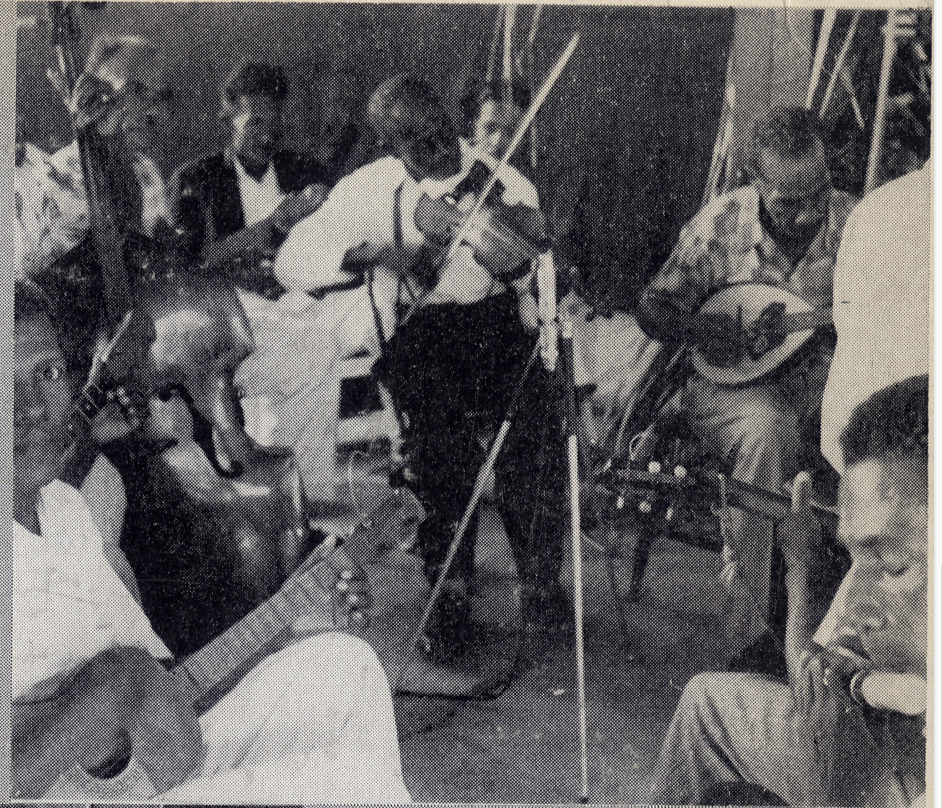
Members of the Grand Curucaye String Band Orchestra, unknown photographer. Cook Records.

Spanish String Orchestra and Syncretism
- However, the way in which the instruments are played, which emphasizes rhythm over melody (the use of pizzicato and syncopation), invokes a distinct Afro-Venezuelan character.

This fusion of African musical traditions and elements with European ones provides an example of a process known as syncretism.
- The instrumentation of the Spanish string orchestra signals the European influences in this music.

"Paranging": A "Trini" Christmas Tradition
In exchange, they are given pastelles (e.g., tamales) and ponche crema (eggnog).
Much like in Puerto Rico (and Venezuela), there is a tradition in Trinidad of groups of musicians called parranderos paying nocturnal, surprise visits to the homes of family and friends, who are jolted from slumber by the sound of music.
Eventually, the folk music performed in this context became known as parang.
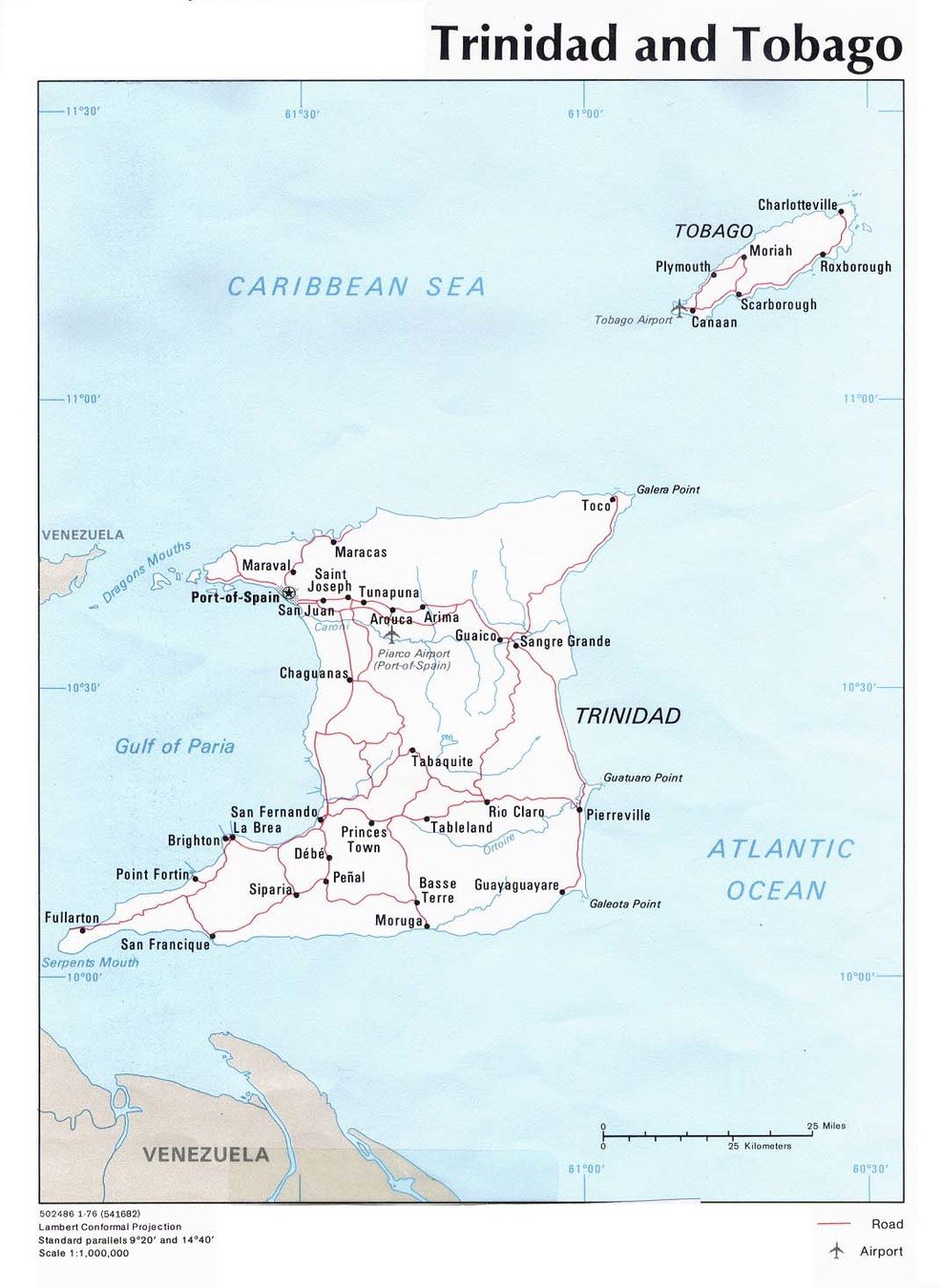

Trinidad and Tobago (Political), map by U.S. Central Intelligence Agency. University of Texas Libraries.

Parang Fiestas Today
- Traditional house-to-house caroling tradition is still practiced by small groups and some larger organized groups in Trinidad.
- Modern parang music has also developed a season of staged performances (concerts) called parang fiestas, which are held throughout the Christmas season.
- The Christmas season ends with a national parang competition.
Voces de Promesa, photo by Maria Nunes. Smithsonian Folklife Magazine.



Instruments of Trinidadian Parang
Parranderos use a wide variety of instruments, such as:
- Venezuelan cuatro (a small, four-string guitar), chac-chacs (maracas), violin, guitar, toc-toc (claves), box bass (a makeshift string bass), tambourine, mandolin, caja (a percussion box instrument), and marimbula (a bass instrument related to the mbira, or thumb piano)
Cantando Gloria - Los Alumnos de San Juan. Uploaded by Denzil Lyons.


Learning Checkpoint
- What are some Christmas traditions in Venezuela and Trinidad?
- What is Venezuelan parranda? What is Trinidadian parang?
- What is the connection between Puerto Rican trulla, Venezuelan parranda, and Trinidadian parang?
- Why do these musical practices serve as an example of syncretism?

End of Component 3 and this Pathway! Where will you go next?



Lesson 10 Media Credits

Audio courtesy of
Smithsonian Folkways Recordings
Video courtesy of
Smithsonian Folkways Recordings
Images courtesy of
Smithsonian American Art Museum
Smithsonian Folkways Recordings
The Arhoolie Foundation
University of Texas at Austin, PCLP Map Collection
National Museum of American History
Library of Congress
Maria Nunes
© 2021 Smithsonian Institution. Personal, educational, and non-commercial uses allowed; commercial rights reserved. See Smithsonian terms of use for more information.
This project received Federal support from the ... administered by the Smithsonian ....
For full bibliography and media credits, see Lesson 10 landing page.




